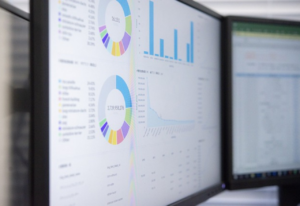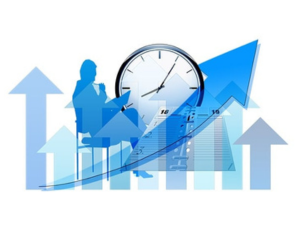 As a business owner, CEO, or decision-maker in Austin, Round Rock, Georgetown, Taylor, Jarrell, or Cedar Park, Texas, staying ahead of the curve is crucial. Predictive analytics is transforming the way businesses operate by leveraging data to make informed decisions about the future.
As a business owner, CEO, or decision-maker in Austin, Round Rock, Georgetown, Taylor, Jarrell, or Cedar Park, Texas, staying ahead of the curve is crucial. Predictive analytics is transforming the way businesses operate by leveraging data to make informed decisions about the future.
Top FAQ Questions about Predictive Analytics
-
What is predictive analytics and how does it benefit businesses?
-
How can predictive analytics improve customer retention and sales?
-
What types of predictive models are most useful for businesses?
What Should Business Owners Know About Predictive Analytics?
Predictive analytics involves using historical data, statistical algorithms, and machine learning techniques to identify the likelihood of future outcomes. This approach enables business owners to make proactive decisions based on data-driven insights rather than relying on intuition alone.
Understanding the Basics
Predictive analytics can be performed manually by data scientists, but the integration of artificial intelligence (AI) and machine learning (ML) has revolutionized the process. AI-driven predictive models can analyze vast amounts of data quickly and provide actionable insights, helping businesses anticipate market trends and customer behaviors.
The Benefits of Using Data Analytics to Predict Future Events
Understanding Customer Behavior for Better Retention and Sales
One of the primary benefits of predictive analytics is its ability to analyze customer behavior. By tracking customers' interactions on your website—such as the products they view or add to their carts—AI can identify patterns and preferences. This information allows businesses to:
- Personalize Marketing Campaigns: Tailor promotions and offers to individual customers based on their browsing and purchasing history. Personalized marketing can significantly increase conversion rates and customer loyalty.
- Optimize Inventory Management: Identify which products are in high demand and ensure they are always in stock. Conversely, use predictive insights to find slow-moving items and bundle them with popular ones to boost sales.
- Enhance Customer Experience: Provide a seamless shopping experience by anticipating customer needs and addressing them proactively. Improved customer experience leads to higher retention rates and brand loyalty.
 Lowering Risks and Detecting Fraudulent Activities
Lowering Risks and Detecting Fraudulent Activities
Predictive analytics isn't just about boosting sales—it also plays a critical role in risk management and fraud detection. By analyzing patterns in transaction data, predictive models can identify unusual activities that may indicate fraud. This capability is essential for:
- Real-Time Fraud Detection: AI algorithms can detect anomalies in real-time, allowing businesses to respond swiftly to potential threats.
- Market Trend Forecasting: Stay ahead of market trends by analyzing current data and predicting future developments. This insight helps businesses avoid risky investments and capitalize on emerging opportunities.
- Credit Risk Management: In the financial sector, predictive analytics can assess the creditworthiness of clients, helping institutions mitigate risks associated with lending.
What Are the Types of Predictive Models You Should Consider?
There are several types of predictive models that businesses can leverage, each with its unique strengths. Here are the top three most common models:
1. Decision Trees
Decision trees are graphical representations of possible outcomes based on different choices. Each "branch" represents a decision path, allowing businesses to evaluate various scenarios and determine the best course of action. Decision trees are particularly useful for:
- Strategic Planning: Visualizing the potential impacts of different business strategies.
- Risk Assessment: Identifying potential risks and their probabilities.
 2. Neural Networks
2. Neural Networks
Neural networks use machine learning algorithms to mimic the human brain's ability to recognize patterns and make decisions. These models are highly effective at processing complex data and are used for:
- Pattern Recognition: Analyzing large datasets to identify trends and patterns that are not immediately apparent.
- Predictive Maintenance: Anticipating equipment failures and scheduling maintenance to prevent downtime.
3. Regression Analysis
Regression analysis uses statistical techniques to examine the relationships between variables. This model helps businesses understand how changes in one variable (e.g., marketing spend) affect another variable (e.g., sales revenue). Regression analysis is valuable for:
- Forecasting: Predicting future sales, revenue, and other key performance indicators.
- Optimization: Identifying the optimal levels of various business inputs to maximize outputs.
Let's Recap
Predictive analytics empowers businesses to make data-driven decisions, improve customer retention, enhance sales, and mitigate risks. By understanding customer behavior, detecting fraud, and leveraging the right predictive models, businesses can gain a competitive edge in their industry.
FAQs
Q1: What is predictive analytics and how does it benefit businesses? A1: Predictive analytics uses historical data and machine learning to forecast future events. It benefits businesses by enabling proactive decision-making, improving customer retention, and optimizing operations.
Q2: How can predictive analytics improve customer retention and sales? A2: Predictive analytics helps identify customer preferences and behaviors, allowing businesses to tailor marketing efforts and personalize offers, leading to increased sales and higher customer retention rates.
Q3: What types of predictive models are most useful for businesses? A3: Common predictive models include decision trees for strategic planning, neural networks for pattern recognition, and regression analysis for forecasting and optimization.
Let Central Texas Technology Solutions help you leverage technology to achieve your business goals.
